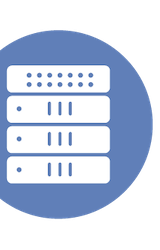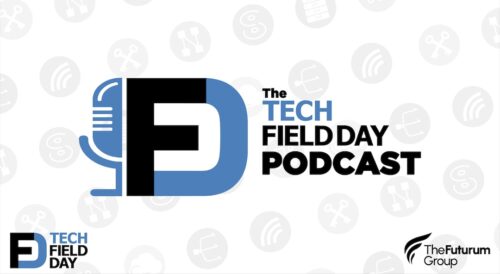Check out what Chris Evans has to say about NetApp and the enhancements of the StorPool platform, particularly with the capability to span on-premises and the public cloud. You can check out his thoughts following Cloud Field Day on his website, Architecting IT, and you can catch all of the videos from Cloud Field Day on the Tech Field Day website!
StorPool Review – Part 1 – Installation & Configuration
While attending Storage Field Day in 2019 as a delegate, Chris Evans had the chance to see StorPool present and was impressed with the their software. Chris just wrote the first part of a deep dive on StorPool and “how the distributed storage architecture works, how it performs and how it integrates into an on-premises public cloud strategy.” In Part 1, he takes an in-depth look into the underlying architecture and the concepts of the software as a whole. Be sure to check out the deep dive from Chris as well as the videos from StorPool’s multiple presentations on our website!
Kubernetes Persistent Storage Managed Well
Chin-Fah Heoh first saw StorPool back at Storage Field Day as a delegate more than a year ago and has followed their progress closely since then. In his blog, StorageGaga, he explores what he says are the many advantages of StorPool Storage and their market offering, including its expansion into managing Kubernetes services. Check out Chin-Fah’s full analysis of StorPool’s Kubernetes prowess on his blog.
Pure Storage FlashRecover Brings Cohesity to FlashBlade
Pure Storage and Cohesity have teamed up to launch a new integrated product: the Pure Storage FlashRecover. This jointly engineered product has gotten the attention of Stephen Foskett. At Storage Field Day earlier this year, Stephen saw Cohesity’s presentations and gained a better understanding of the architecture of their products. You also might remember seeing FlashBlade introduced at Pure Accelerate 2016. Stephen writes that Pure Storage and Cohesity joining forces has a chance to make some real waves in storage.
Western Digital’s Data Vision at SFD18
At Storage Field Day, the delegates got a glimpse into some data storage innovations and how these will continue to evolve. VP of DCS Business, Narayan Venkat, describes how the data will flow, varying categories of data, and how Western Digital envisions the environment changing to allow for these new paradigms to happen. Data storage is a rapidly changing field, and Western Digital made a convincing case during Storage Field Day that they are prepared to meet whatever the needs of storage that enterprises will discover going forward.
Moving to Unstructured Data Stores
Words mean things. So when Chris Evans saw the storage industry turning away from object stores and embracing the term “unstructured data store,” he needed to see if there was any merit to the change in naming convention. For Chris, object storage as a term has some baggage, even if the technology born in the 90s is more relevant than ever. Object storage is often synonymous with low-cost, low-performance storage. With innovative companies like Vast Data using what is traditionally viewed as object storage for spreading data across hundreds or thousands of NVMe drives, if might just require new terminology to connote the change in use cases. Be sure to check out more about Vast Data with their recent Storage Field Day presentation.
One Tier to Replace Them All
Data centers often need to deploy and manage multiple types of storage devices to provide the needed performance and storage tiers. Meeting an organization’s storage capacity and storage performance requirements can be a juggling act with multiple storage devices. VAST Data’s Universal Storage Solution can simplify this complexity using a single device providing a single cost-effective Flash tier. Vast Data made a big splash showing this off at Storage Field Day, so be sure to dig into this article for background before watching their full presentation video.
Hybrid Cloud Might Be the Right Solution for Data Analytics
With ever-expanding data sets and machine learning capabilities, organizations are exploring cloud solutions for access to resources not available in their on-premises datacenters. Hybrid cloud is becoming the de facto approach to cloud for many. Organizations wanting to take advantage of analytics for large data sets are finding it’s often simpler and more cost-effective to make use of cloud resources. NetApp’s Data Availability-as-a-Service solution provides a simple method for using hybrid cloud to provide access to those resources. It was designed with the IT non-expert in mind. Thanks to a deep dive at Storage Field Day, this post breaks down all the details.
The Definition of Secondary Storage Is Evolving – as Is Cohesity
The challenge of data management is nothing new, and the Enterprise Storage market has responded at both ends of the spectrum by providing mature, high performance solutions for primary datasets, and lower-cost archival solutions for less important bulk data. But many businesses are discovering a capability gap when attempting to store secondary data that falls into the “everything else” category. For this reason, Cohesity has begun to leverage its core capabilities to attack new problems as customer requirements, and the definition of secondary storage, continue to evolve. At Storage Field Day, the company showed off DataPlatform, which solves a set of challenges not addressed by high-end primary storage or low-cost archival storage. This provides a unified approach for storage of secondary data across both on-premises and cloud environments.
Cohesity at Tech Field Day in 2019
Alastair Cooke is getting ready for Storage Field Day, and is particularly excited to hear from Cohesity. He’s familiar with the company, but has never seen them live at a Field Day event yet. If you need to do your homework to get up to speed on their solutions, be sure to check out this post from Alastair, which organizes all of our video coverage of their past presentations.
Meeting the Storage Performance Requirements of AI and ML Workloads With WekaIO
Two of the most impressive technological advancements in recent years are Artificial Intelligence (AI) and Machine Learning (ML). But AI and ML workloads require vast amounts of storage and high-performance access from multiple servers. This is the ideal market for the WekaIO distributed storage solution, as demonstrated at Storage Field Day in February. It offers scale, performance, and compatibility with AI and ML workloads.
Why You Should Consider Software-Defined Storage in Your Data Center
Datacenter architectures must meet the changing needs of many applications, while also supporting demanding workloads today. Datera’s design focuses on data movement, to allow flexibility for growth as requirements change. It uses commodity hardware and machine learning to create an optimal and cost-effective storage platform for the modern datacenter. Stephen Foskett breaks down their approach based on Datera’s presentations at Storage Field Day and Tech Field Day.
IBM’s New Class of Data Protection: Upcycling of the IT World?
As discussed at Storage Field Day in February, the idea of reusing and repurposing stored data makes sense from both a business intelligence perspective and from a cyber-resiliency standpoint. IBM’s solution is based on a solid foundation with years of enterprise use, and enhances the snapshot capabilities already found in most enterprise storage systems. Stephen Foskett looks at how Spectrum Protect Plus really moves IBM’s data protection offering forward, “upcycling” data for the enterprise.
StorPool’s Strategy Rose to the Cloud—and Beyond!
Before buzzwords like “cloud” and “software-defined storage” (SDS) became part of our everyday vocabulary, software developers like Boyan Ivanov, Chief Executive and Co-Founder of StorPool Storage, already were hard at work devising ways to build extremely fast, reliable, and scalable storage solutions for public and private use cases. While the solution may not have had a fancy moniker, Stephen Foskett looks at what StorPool presented at Storage Field Day and how it aims to re-energize block storage, combining high-end storage area network (SAN) technology through software and the performance of local solid-state drive (SSD) storage.
Cohesity Looks to Exploit Secondary Data Value With MarketPlace
Since emerging as a secondary storage startup, Cohesity has continued to innovate in how to deliver the full value of data to their customers. In this post, Chris Evans looks at the latest implementation of that approach with Cohesity MarketPlace. This firmly moves the company into the data management sphere, with the ability to run AI/ML, analytics or other data-intensive applications on content stored in the Cohesity DataPlatform.
EP27 – VAST Data – a Revolutionary Storage Platform for the Next Decade – With Howard Marks
In this episode of the TECHunplugged Podcast, hosts Max Mortillaro and Arjan Timmerman talked with Howard Marks. While they once all joined forces behind the delegate table at Field Day events, Howard is now the Technologist Extraordinary and Plenipotentiary at VAST Data. VAST presented at Storage Field Day, and in the episode, they dive deep into how the company is bringing revolutionary flash economics to the market by combining 3D XPoint, NVMe-oF and QLC Flash.
Cloud-Native Data Protection
In this post, Chris Evans looks at cloud-native data protection. He breaks down why it makes sense for an organization, what some of the potential challenges are, and takes time to define what a cloud native solution should actually look like. He also looks the companies offering solutions in the space, including what Druva showed at Cloud Field Day last year, and solutions presented at Storage Field Day by NetApp.
The Hidden Gem That Is StorPool
Chris Evans knows his storage. After seeing StorPool present at Storage Field Day, he considers them a hidden gem. They offer a high-performance scale-out block storage solution running on commodity hardware and Linux. Using their self-developed on disk-formats, inter-node protocols and cluster management, StorPool was able to offer the same performance as Microsoft’s HCI specification, without the need for a costly NVDIMM cache or RDMA. Chris thinks they have a very interesting solution for the right customer.
Put All Your Data on Flash With VAST Data
Jon Klaus remembers when flash storage become affordable as a performance tier back in 2012. Since then, we’ve seen all-flash arrays becoming increasingly common, but the spinning disk remains for a variety of reasons. At Storage Field Day, VAST Data demoed how their novel architecture is designed to finally kill the spinning disk. They are able to do this by using cheap low endurance QLC flash, which doesn’t wear out quickly thanks to 3D Xpoint SSDs used as a write buffer. Jon runs through more fo the technical details of VAST’s approach, but he thinks its a radical rethink of storage based on the latest emerging technologies.
Datera and the Move Towards Software Defined Storage in the Enterprise
When discussing modern applications, infrastructure is often not given much though except to say that it should be easy to provision according to the needs of the application itself. Those who provide the infrastructure to applications developers and end users know this is no trivial task. Ken Nalbone looks at how Datera’s software defined storage platform helps bridge the this gap, which he got a close look at during Storage Field Day earlier this year.








